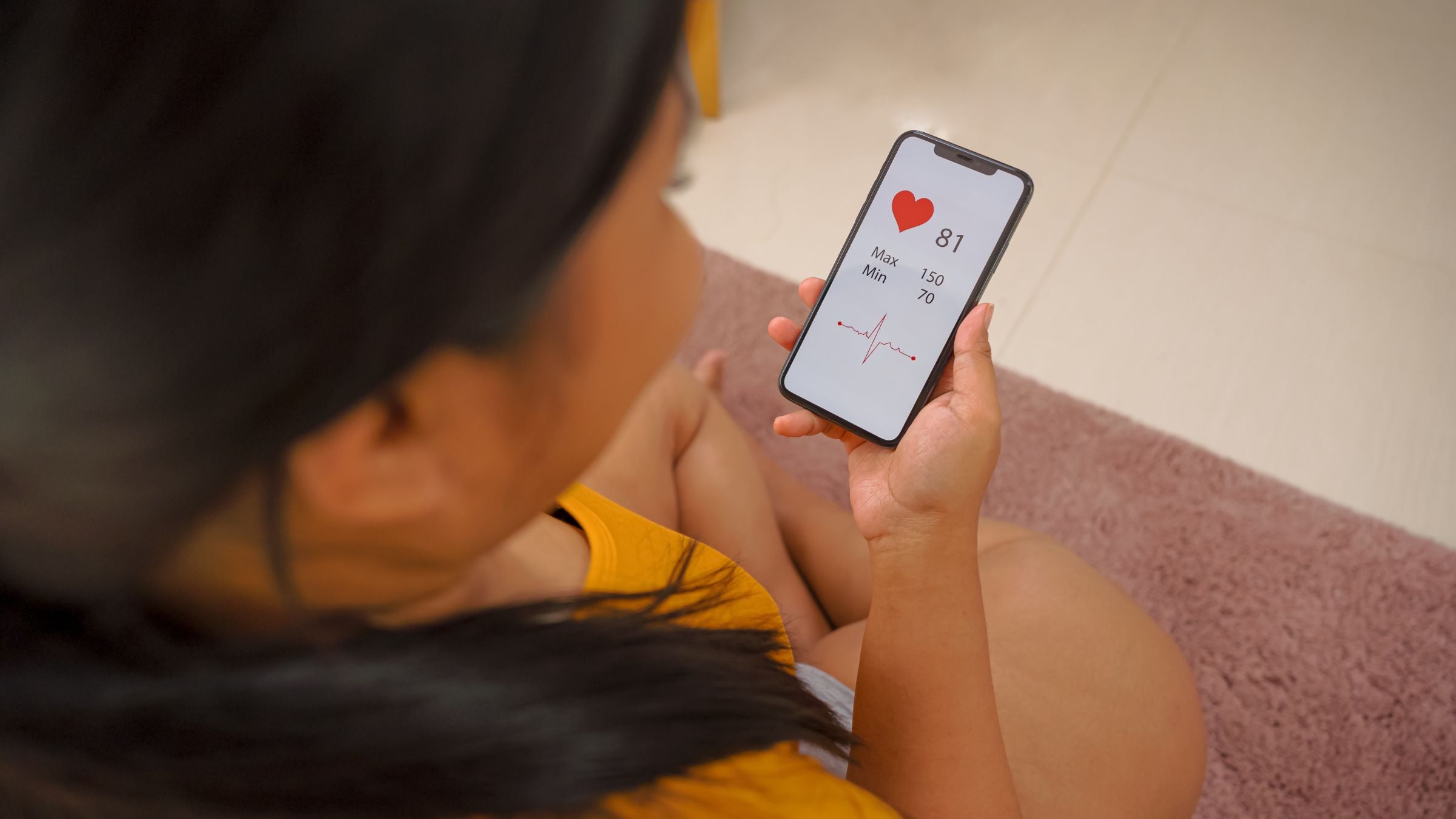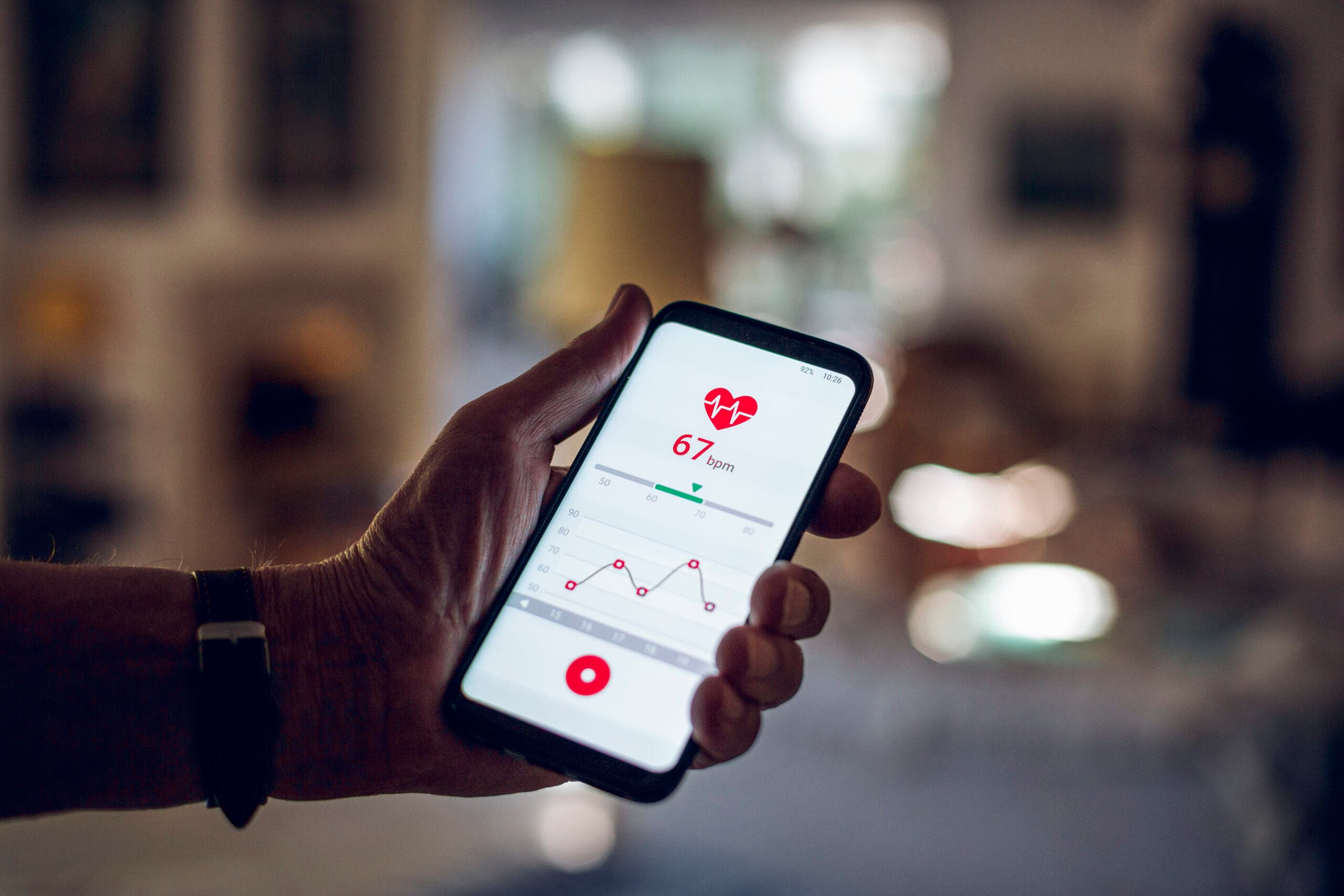Can Triathletes Trust HRV Readings From An Everyday Smartphone?

Measuring HRV through the camera lens of iOS and Android devices is recently getting more traction. (Photo: Getty Images)
Imagine a world where you can wake up in the morning, place your finger on your phone, and get a vast array of health data, including one of the newest trends in endurance sports: heart rate variability, or HRV.
Far-fetched science fiction? Not really—smartphones have been used for these purposes since at least 2017. Yet measuring HRV through the camera lens of iOS and Android devices is recently getting more traction.
But how does the technology work? And are these readings reliable enough for the demands of triathletes?
What’s HRV?
HRV is the variation (in milliseconds) between consecutive heartbeats. Because despite what we’ve come to understand your heart does not beat at a constant rhythm but is controlled by an internal mechanism that produces variation. Although it may seem counterintuitive, the higher the variation, the better.
A lower HRV may indicate that the body is under more stress. Conversely, the body is more relaxed if the HRV reading is higher. The easiest way to think about it is if you have low variation (a lower HRV value), you’re less prepared to react to an outside stimulus; more variation (a higher HRV value) means you’re body is in a state of readiness.
What do you do with HRV?
There are a lot of ways to measure your HRV. For example, you can use heart-rate straps or wearables like WHOOP, most smartwatches, or an Oura ring. These devices usually measure your heartbeats throughout the night and give you a morning score calculated through mathematical models.
Once you understand your score (and its fluctuations over time), you can make informed decisions about your training regimes or lifestyle. It’s very important to understand that a HRV score is very dependent on the individual and trends/fluctuations are what counts—not an absolute number.
Factors that can negatively impact your HRV include excessive training stimuli, a poor night’s sleep, alcohol consumption, or a stressful day at work. Your HRV trend can also help you spot the onset of illness and indicate that you might want to hold back on training. What it can’t necessarily do is pinpoint which of those stressors are causing the low variation/trend. To HRV, stress is stress.
On the other hand, HRV values can give you an extra mental edge when the score is high, and you have a hard session coming. Regardless, it’s still very important to keep listening to your body and back the HRV readings with how you feel.
For more on HRV, check out All You Need to Know About Training with Heart Rate Variability.
Where smartphones come in

Now, you can also use your iOS and Android devices to measure your HRV. But how? And is it any good?
“A light—typically the green LEDs we see in watches, or the flashlight in a phone—is transmitted or reflected through a finger or wrist,” explains Marco Altini, a world-renowned researcher, expert in HRV, and founder of HRV4Training, an app that calculates the HRV score for wearables and smartphones.
On top of the light, devices also need a sensor to detect how much light has been transmitted and reflected. In the case of rings and watches, this is usually a dedicated sensor, while smartphones use their built-in cameras to detect light transmission and reflection—the same ones you use to take a selfie.
“As the heart pumps blood through the body, changes in blood volume at the finger (or in the capillaries at the wrist) will cause the amount of light transmitted or reflected to change,” explains Altini. “This means that with a simple phone, we can create an optical measurement similar to what you have in dedicated rings and watches by using the flash to provide a light source and then using the camera to capture changes in light reflection due to changes in blood volume during a cardiac cycle.”
The signal needs then to be analyzed to compute an actual reading. Getting the signal is easy, while “processing it and removing artifacts remains quite complex”, Altini says.
When he developed HRV4Training, other apps recorded heart rates using a camera. So, he thought that if it was possible to record heart rate, there must be a way to calculate HRV, too.
Limitations of smartphone HRV readings
Altini was right. But it’s complicated.
First, what you measure at the wrist of a finger is not technically HRV but PPG (photoplethysmography), which is the signal calculated and measured by the optic sensor.
“While the two are highly correlated (blood flows when the heart beats), there can be an offset,” explains Altini.
Also, some people might have colder hands than others or lower blood flow, making it more challenging for this method to work correctly. Furthermore, there can also be actual misfiring of the heart, finger movements, changes in the phone light pattern, ambient light, or inconsistent data over time.
Despite these limitations, the technology has been proven largely reliable and used successfully over the last decade.
Validating the data
In 2017, Altini and a group of researchers, including triathlon coach and multiple-record holder Dan Plews, validated the HRV4Training app against chest strap devices and electrocardiogram methods. The app and methods were independently validated in 2021 in a study that showed high precision for the Oura ring and less reliable results for another app, CameraHRV.
Although this research points toward the strong reliability of the technology, it’s worth noting that the first study involved just 29 subjects, and the second one involved five recruited to perform a total of 148 validation trials. The research also validated the camera on iPhones only, not Android devices. (The app will inform the user if a specific phone is not supported.)
Real-world use of smartphone HRV readings
Arguably, one of the most successful ambassadors of the reliability and usefulness of HRV is Plews. Coach of 2022’s Ironman World Champion Chelsea Sodaro and world record holder of the AG’s fastest Ironman time ever set (7:56:56 in Florida in 2023), he uses HRV daily with his athletes and to monitor his values.
“Most ways to measure HRV are quite reliable,” says Plews. “The only issue with the camera phone is you can have a little more user error. Because you’re dependent on the person making sure their finger is on the phone and it’s not moving. If the person is good at taking it, then it’s very reliable.”
Plews, however, uses two wearables, and prefers it this way since he has kids.
“Research shows the best way to take HRV is when you wake up first thing in the morning when you’re still lying in bed,” he explains. “But if you’ve got children, you cannot guarantee you’ll get that time in the morning or wake up before you want to. The good thing about wearables is that it removes the necessity to remember to take the measurement.”
The bottom line
Getting HRV measurements has proved both its reliability and success over the last ten years, so there’s no good reason why you shouldn’t trust the process.
However, there are still limitations; not all apps can provide the same level of accuracy, and not all are scientifically validated. Finally, as with other sports science data, even HRV will give you the best results when paired with your internal perceptions.